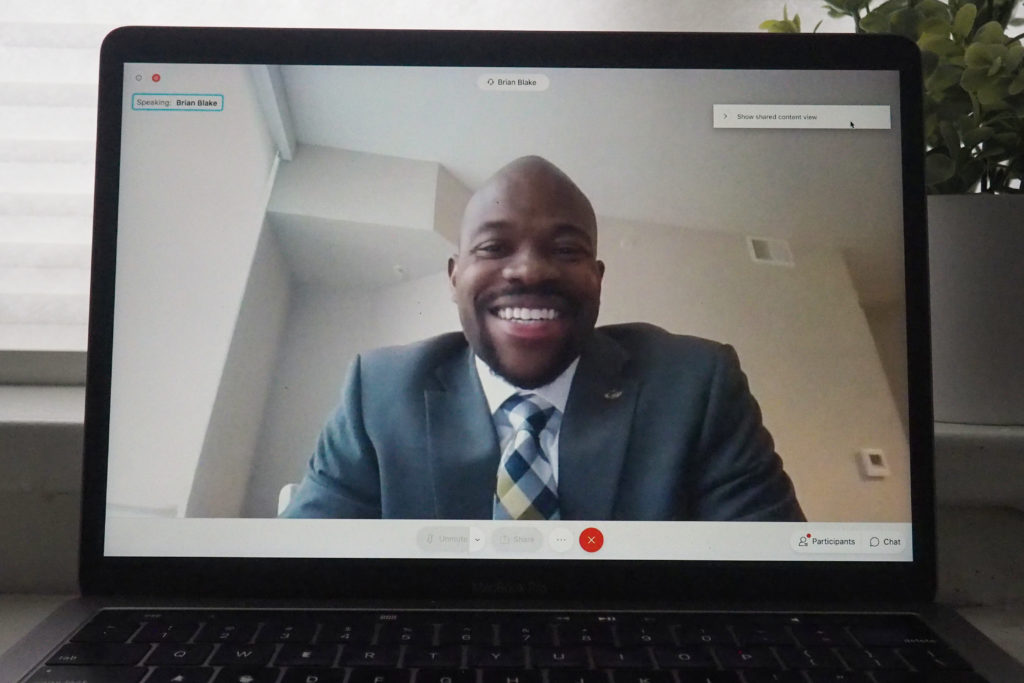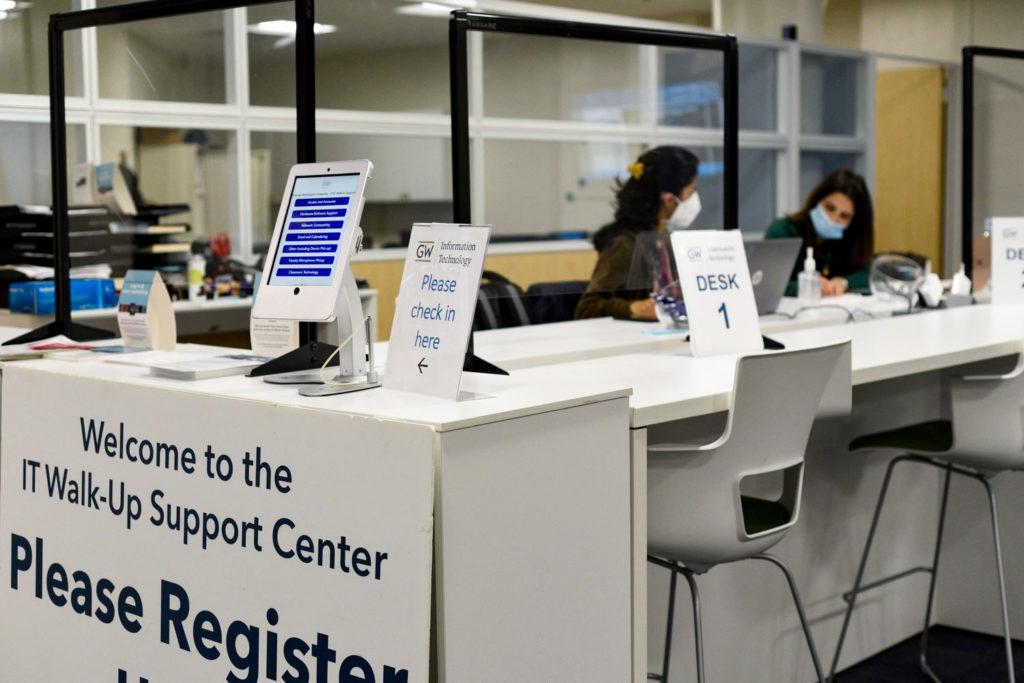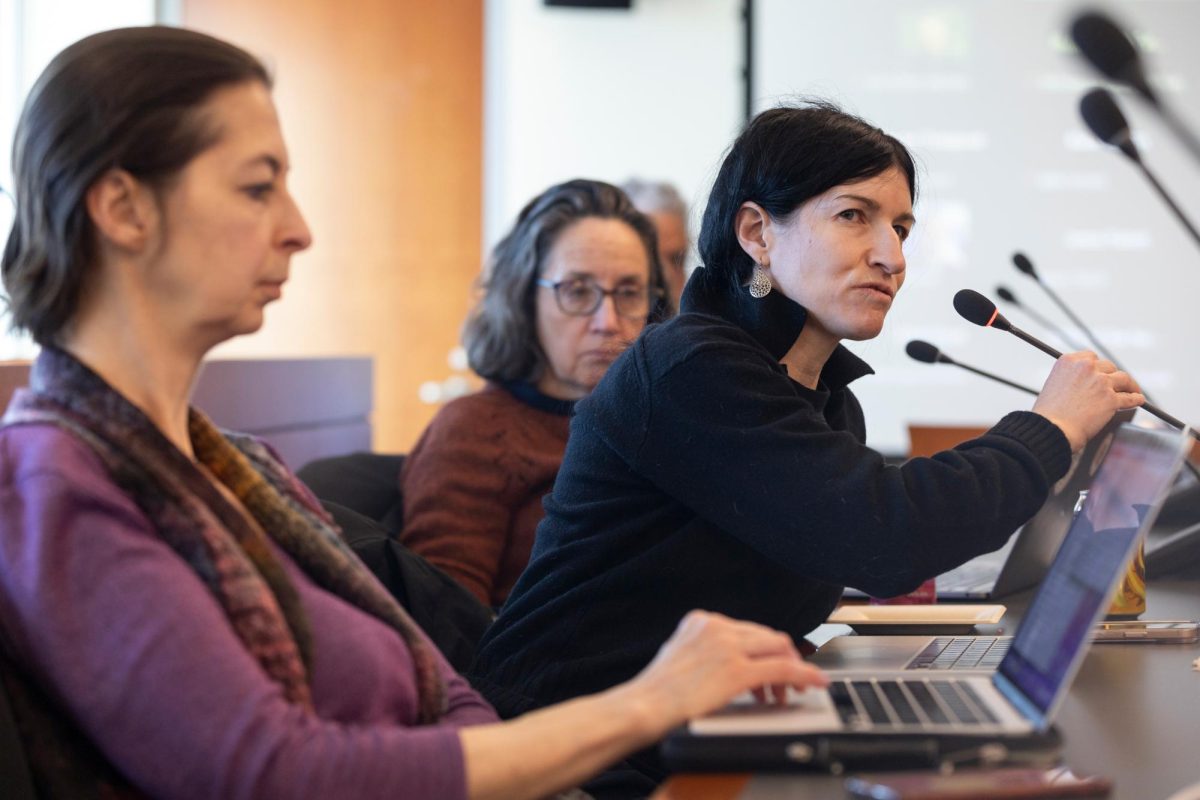Officials said GW’s freshman yield rate dropped to a 10-year low as the pandemic continues to alter the University’s enrollment.
Provost Brian Blake said at a Faculty Senate meeting Friday that the COVID-19 pandemic caused shifts in some academic metrics closely tracked by officials, like enrollment levels and yield rates. The most recent data also shows improvements in providing students more flexibility to pursue interdisciplinary studies and double majors, he said.
“We have this comprehensive environment,” Blake said. “We don’t want to prevent students from taking advantage of all we have to offer. This is an area I think we need to bolster.”
Student metrics
GW’s yield rate – the percentage of admitted students who attend the University – for incoming freshmen dropped from 23.8 percent to 17.4 percent in 2020, the lowest since at least 2011. Officials received a nearly record-high number of freshmen applications in 2020 as they sought to reduce the size of the undergraduate population but ultimately admitted multiple rounds of waitlisted students once the plan was put on hold during the pandemic.
Officials also accepted 69 percent of transfer students in 2020, more than triple the previous year’s acceptance rate, to boost enrollment.
“We had a larger population of transfer students – that’s by design,” Blake said. “We did say we were going to change the composition a bit that particular year.”
The four-year graduation rate increased slightly to 79 percent, nearly tying a record high, while the six-year graduation rate is expected to decline “slightly” from last year.
“Graduation rate, which is great, is basically a 20-year high right now, which is incredible – it’s on a three-year upward trend,” Blake said.
Nine percent of new students had a high school GPA of below 3.2 in 2020, tying with 2017 for a 20-year low. The percentage of new students with high school GPAs between 3.4 and 3.75 increased slightly to 33 percent, Blake said.
Blake added that student retention rates fell this year, largely because about 4.5 percent of students took leaves of absence during the pandemic.
“When I actually pulled out leaves of absence, we’re going to retain better this year,” he said.
The percentage of students graduating with two majors increased from 14.1 percent to 14.9 percent this year, which Blake said is a measure of students’ abilities to cut across fields of study at GW. Officials introduced an option for students in the Elliott School of International Affairs to pursue a Bachelor of Science in 2019 to encourage students to also study STEM fields.
“The introduction of their Bachelor of Science degree in international affairs I think is what gives students the ability to do more dual degrees,” Blake said. “The more we can do there, the more options our students have.”
Faculty metrics
Blake said officials are committed to maintaining the number of tenured and tenure-track faculty to 75 percent of the faculty population, but the number dropped from 74.8 to 74.1 percent among regular faculty members this year.
The percentage of non-tenured or tenure-track faculty this year increased from 25.2 to 25.9 percent University-wide. The Faculty Code states that the percentage of regular faculty members in non-tenure track appointments “shall not exceed 25 percent in any school.”
The number of regular tenured or tenure-track faculty decreased from 871 to 851 this year, and Blake said he approved 15 new tenure-track hires “a few weeks ago” to address the gap. Officials implemented a hiring freeze last March to mitigate the financial impact of the pandemic.
“We’ve had some delays this past year in hiring for obvious reasons, but we’re pretty close still,” he said.
Compared to 2011, the percentage of tenured or tenure-track faculty members increased in six schools – the Columbian College of Arts and Sciences, the Elliott School, the Milken Institute School of Public Health, the School of Engineering and Applied Science, the School of Medicine and Health Sciences and the School of Nursing, according to Blake’s presentation.
The presentation also states that the percentage of tenured or tenure-track faculty members decreased in three schools compared to 2011 – the Graduate School of Education and Human Development, the School of Business and GW Law.
Blake said the composition of faculty members in terms of race and gender stayed roughly the same this year, except for a 0.8 percent increase in the number of Asian faculty members. He said the composition stayed the same overall despite losses in the number of faculty at GW this year.
“Basically the gender diversity, underrepresented minorities, they all kind of stayed similar year over year in composition,” he said. “I think we lost faculty, but their composition stayed the same.”
Blake said the average salaries for associate and assistant professors has largely stayed the same in recent years, but the average salaries for full professors has become “more competitive” in GSEHD and decreased in the nursing school.
He said officials plan to look into the nursing school to see what is causing the decreases.
“I don’t think the ‘n’ is very big there, so just a couple of changes there, attrition, really matters,” he said. “Those averages could be affected by one person leaving because it’s just not as many.”
The average salary for all professors and associate professors increased this year by 2.3 and 0.2 percent, respectively, which Blake said is lower than the mean and median percent increase for GW’s market basket schools. But he said the average salary for all assistant professors increased by 3 percent, which is higher than the mean and median percent increases for GW’s 12 peer institutions.
“We are competing very ferociously with our peers to get our assistant professors,” he said. “I think all of them are important, but I do think we won’t win new faculty that are very research-oriented if we’re not competitive on the front end. So this shows that we’re doing that, but it’s worth having a conversation about the other categories as well.”
Blake said “across the board,” salary inequity between female and male faculty members is greatest in the Elliott School. Female professors in the Elliott School made about 90 cents for every $1 that male professors made this academic year, and female associate professors in the Elliott School made about 82 cents for every $1 that male associate professors made this academic year.
The business school saw the most significant ratio in female to male faculty members’ salaries, with full-time female faculty making $1.14 for every $1 their male counterparts make, according to Blake’s presentation.








